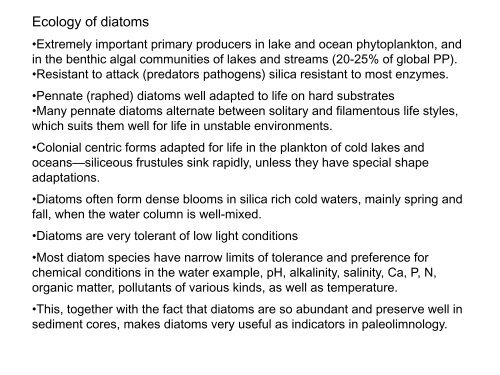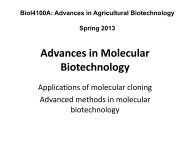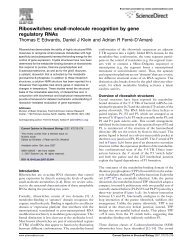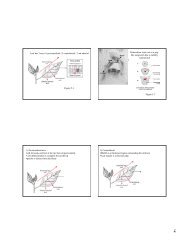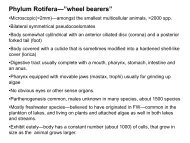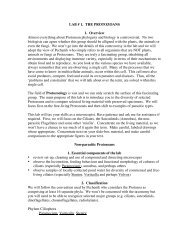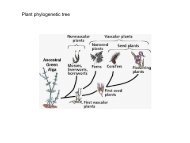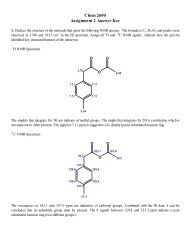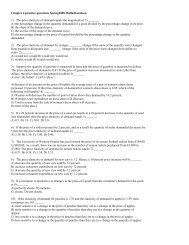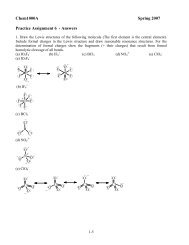You also want an ePaper? Increase the reach of your titles
YUMPU automatically turns print PDFs into web optimized ePapers that Google loves.
Ecology of <strong>diatoms</strong><br />
•Extremely important primary producers in lake and ocean phytoplankton, and<br />
in the benthic algal communities of lakes and streams (20-25% of global PP).<br />
•Resistant to attack (predators pathogens) silica resistant to most enzymes.<br />
•Pennate (raphed) <strong>diatoms</strong> well adapted to life on hard substrates<br />
•Many pennate <strong>diatoms</strong> alternate between solitary and filamentous life styles,<br />
which suits them well for life in unstable environments.<br />
•Colonial centric forms adapted for life in the plankton of cold lakes and<br />
oceans—siliceous frustules sink rapidly, unless they have special shape<br />
adaptations.<br />
•Diatoms often form dense blooms in silica rich cold waters, mainly spring and<br />
fall, when the water column is well-mixed.<br />
•Diatoms are very tolerant of low light conditions<br />
•Most diatom species have narrow limits of tolerance and preference for<br />
chemical conditions in the water example, pH, alkalinity, salinity, Ca, P, N,<br />
organic matter, pollutants of various kinds, as well as temperature.<br />
•This, together with the fact that <strong>diatoms</strong> are so abundant and preserve well in<br />
sediment cores, makes <strong>diatoms</strong> very useful as indicators in paleolimnology.


